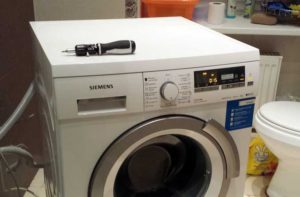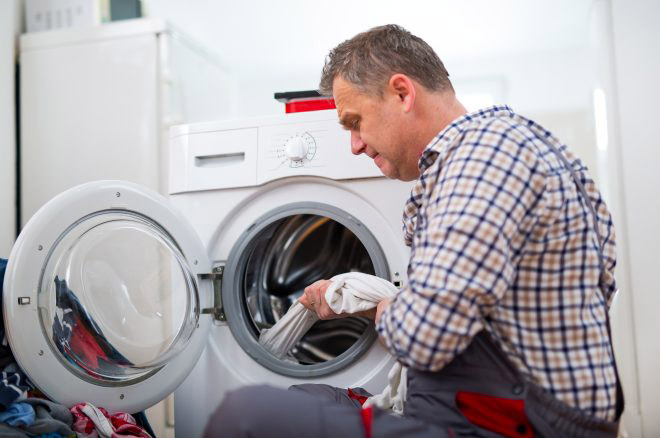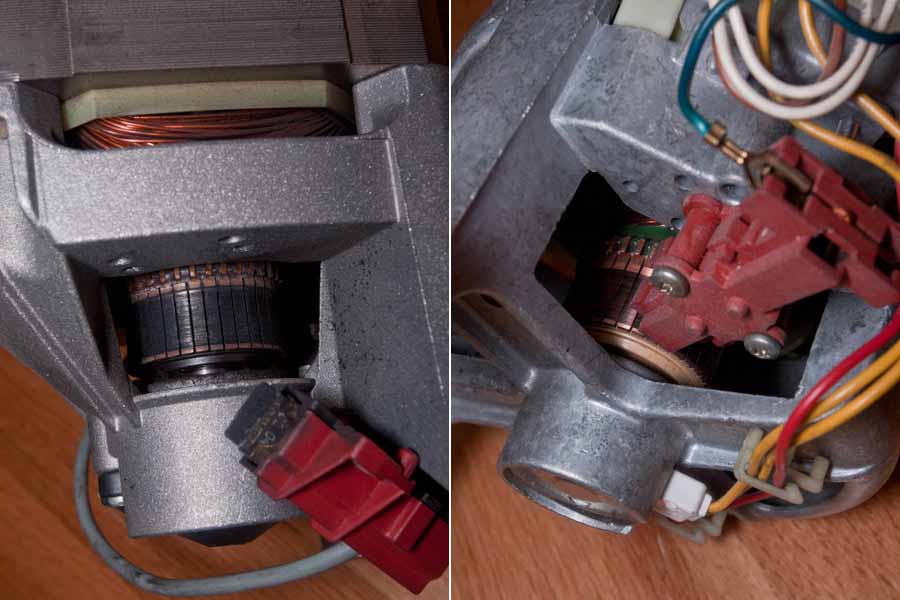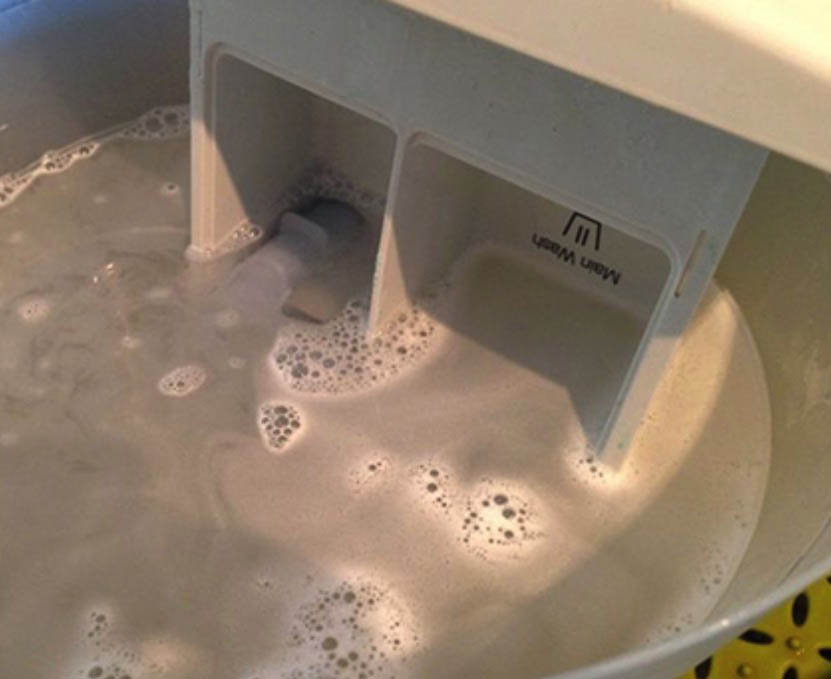 Household appliances from Siemens have managed to gain popularity. But even high-quality and reliable SMAs sometimes fail. Having information about typical failures, you can identify them on your own and repair Siemens washing machines on your own.
Household appliances from Siemens have managed to gain popularity. But even high-quality and reliable SMAs sometimes fail. Having information about typical failures, you can identify them on your own and repair Siemens washing machines on your own.
Typical malfunctions of Siemens washing machines
German technology is actually considered to be of high quality in all its components. Experts assure that if we compare with other washing machines, then in terms of reliability, Siemens can be distinguished by the engine, control module and bearings. The listed elements rarely fail.

But the following failures are identified as weak points:
- The wash ended, but the water did not drain, the program did not switch to rinse or spin. In this case, the likely failure will be failure or clogging of the pump;
- The machine takes in water and immediately drains it. The problem may be with the fill valve. One sign of a problem is water leaking near the detergent dispenser;
- water flow. As a rule, this happens near the door or under the body. The reason is wear of the cuffs or their weakening;
- no water heating. In most cases, the problem is related to the heating element;
- When the machine is operating, vibration is observed and knocking is heard.In such situations, it is recommended to check shock absorber devices and dampers for wear.
How to repair Siemens washing machines
Let's try to figure out how to deal with the most common failures ourselves.
- Replacement of the water drain pump and pipes.
This kind of work is probably the most difficult. The problem is that in a washing machine of German origin, it is possible to get to the pump only if you remove the front panel. And in this case, you will have to disassemble almost the entire machine.

So you should clear the place, prepare various screwdrivers and pliers, and you can begin the repair:
- remove the fastening clamp from the cuff and dismantle the cuff itself;
- take out the tray for detergents, unscrew the self-tapping screw securing the front panel;
- remove the part of the housing at the bottom, under which two more screws should be unscrewed;
- unscrew the hardware securing the pump;
- carefully move the control panel to the side to maintain the integrity of the wiring;
- disconnect the wiring connected to the machine door;
- remove the front panel of the SMA.
Now you can carefully examine all the parts inside the machine. As a rule, it is recommended to start with the pipes laid from the tank. During the inspection, their integrity and tightness are checked. To remove a broken pump you must:
- disconnect all electrical wiring, disconnect the pipe leading from the pump to the tank;
- remove the water drain hose.
The pump is checked for blockages and functionality. If it is in good working order, it is necessary to rinse the pipes and volute and reassemble in the reverse order. If the pump is completely faulty, it is replaced with a similar element.
- Procedure for replacing the intake valve.
It can fail for many reasons, including normal wear and tear and poor quality water. But it will still have to be changed, since most often repair work turns out to be impractical.

What to do in such cases:
- The washing machine must be disconnected from the water and electrical supply;
- after this, the water intake hose is unscrewed;
- Use a Phillips screwdriver to unscrew the fasteners of the top panel;
- at the hose approach point we find the inlet valve and disconnect the wiring from it;
- the pipe is disconnected, the fasteners are unscrewed, the valve is removed;
- a new element is inserted in its place, and all actions are performed in reverse order.
Some models have a feature in the form of a plastic plug. It can be easily removed with a flat screwdriver.
- Replacing the rubber cuff on the hatch.
This kind of work can be done without dismantling the tank. All activities require skill and patience to complete. You just have to purchase a similar cuff, otherwise the seal will be compromised.

Our actions:
- remove the metal clamp holding the cuff to the wall of the washing machine;
- we remove the wall according to the already known scheme;
- the pipe coming from the detergent receiver must be disconnected;
- The position of the rubber cuff must be marked with a marker, then it can be removed and a new one put on the free space;
- attach the hose;
- We put the front panel in place, put on the cuff, and secure it with a clamp.
- Sequence of actions when replacing the heating element.
Increased water hardness and excessive use of the water heating element lead to failure of the water heating element.The washing process will take place in cold water, and this will significantly reduce efficiency. There are models in which, after the heating element fails, the washing process does not begin at all, and the corresponding error code is displayed on the screen.

In models from a German company, the heating element is located under the tank, behind the front panel of the machine. Having unscrewed all the screws, you can easily remove this wall and check the heating element for its functionality using a multimeter. In case of malfunction, replace it. To do this you will have to:
- unscrew the nut located in the center of the base of the heating device;
- remove all wires, disconnect the temperature sensor;
- Pull the heating element towards you using smooth rocking motions;
- take a new analogue, install it in the vacated slot, after removing debris and scale from there;
- connect the wires to the corresponding terminals, tighten the nut.
- Brush wear, motor failure.
Engine problems account for almost a tenth of all failures. During a short circuit, the motor winding could burn out, or the commutator brushes could simply wear out.

To replace you need:
- remove the top and back panels;
- remove the drive belt from the motor pulley;
- disconnect all wires;
- unscrew all fasteners;
- remove the motor, move the terminal plate and remove the brushes.
They need to be inspected. In case of severe wear, it is recommended to replace them with new ones, after which the engine is installed in its original place.
There are known cases when electronic elements—the board or its components—fail. The procedure is quite complicated; a beginner may not be able to cope with it. You will need to have the unit's electrical diagram on hand.Experienced technicians advise that if the board fails, contact a workshop - repairing it on your own may lead to additional problems.
Advice from professionals, preventive measures
If you want to wash the outside of the washing machine, you must turn off the power to the unit and do not use a stream of water or chemical detergents containing solvents or abrasive components. It will be better if you simply wipe the case with a damp cloth.
It is necessary to remove scale from the elements of the washing machine using special means, using them in accordance with the recommended dosages.
The detergent drawer should be inspected regularly. If there is dirt or powder residues in it, remove it, rinse thoroughly, and return it to its original place.

The condition of the water pump should be checked several times throughout the year. For this procedure, the base wall is removed, the drain hose is pulled out, and the liquid is drained. After this, the pump is cleaned and the impeller is checked for rotation. Then the pump cover is installed in its place and the panel is attached.
At least once a year, it is necessary to remove and check the filter located in the water intake hose of the washing machine.
Conclusion
As a result, it should be noted that only the most common failures of a laundry washing machine from Siemens are listed here. Other breakdowns also occur - the control module burns out due to voltage surges if there is no protection element. With long-term operation, bearings and seals wear out greatly.
This kind of washing machine repair is quite feasible on your own, but you will need free time, the necessary tools and patience.









